Here are 15 simple and inexpensive natural fertilizer options to DIY using common household items—plus 5 recipes for homemade plant food.
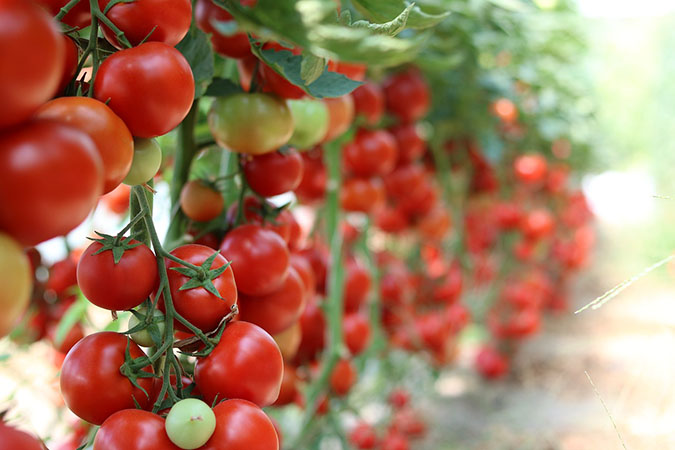
Image by Dominika karkika from Pixabay
Homemade Natural Fertilizer—15 Simple and Inexpensive Options
There was a time when people gardened because backyard produce was far better and cheaper than anything from the store. To tell the truth, it still is, or at least it still can be. The trick is knowing that, back in the day, people used their own compost and homemade fertilizer.
Yet some are convinced that you have to spend a bundle of money to have a really nice, healthy garden. I think that this misconception grew out of the fact that most people have backyards that are filled with really poor/weak soil.
For a limited time … Get our complete DIY Hoop House Package (a $30 value!) absolutely free when you buy TGN’s Greenhouse Construction eCourse. Click Here for Details!
The reasons for this are complicated—a subject for another day. Suffice it to say that if the soil is weak, your plants will also be weak. And so it follows that weak plants have poor production, leading to more time and money spent on a low quantity of low-quality vegetables.
Healthy Soil Equals Healthy Plants
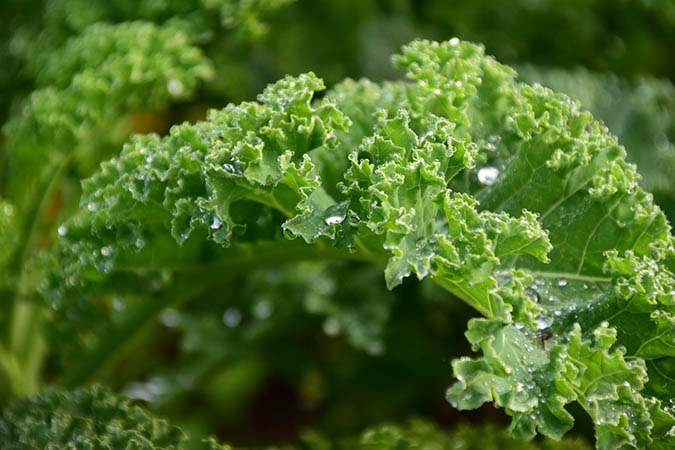
Image by Ulrike Leone from Pixabay
This means that you need to enrich your soil. Because most people are not making their own compost at home, they need to buy fertilizer. Plant fertilizers purchased from the local garden center often contain chemicals that may harm your plants and are not environmentally friendly.
You May Also Enjoy:
“How to Improve Your Terrible Soil”
“Sheet Mulching: Build Soil, Thwart Weeds, and Make Your Garden Fertile”
In addition, fertilizer can be a bit pricey, and this is most likely why the myth that home gardens are expensive continues. This is not necessarily true. You needn’t spend a bundle of money because, believe it or not, you are full of fertilizer!
Kudos for Compost
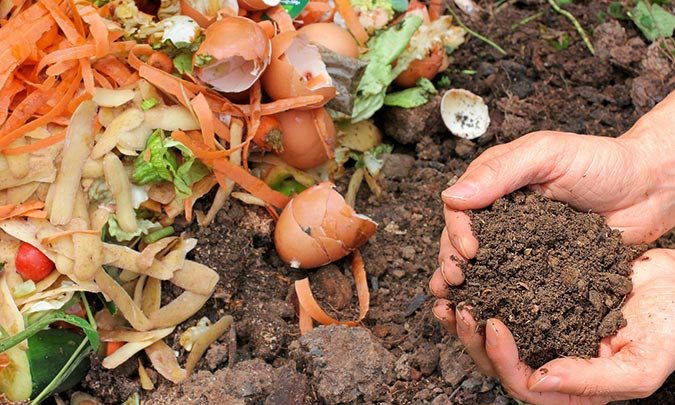
Image by melGreenFR from Pixabay
It should be noted that most people understand that the best way to get good garden soil is to use compost to amend the soil. Of course, that is true. Compost can be made at home out of leftover food scraps and lawn clippings, so it is virtually cost free.
Composting may be all one needs for a successful home vegetable crop. If, however, the soil is still lacking in nutrients or if you are planting a more demanding vegetable garden, augmenting with another type of homemade plant food may be advisable. So why spend good money on store-bought fertilizer when you can make a natural fertilizer yourself with just a little information?
Homemade Plant Food for Prolific Plants
As we’ve established, the key to a good garden is good soil. Of the essential nutrients plants need to thrive, most of them are found in soil. Nitrogen, phosphorus, potassium, and (to a lesser extent) calcium, magnesium, and sulfur are called macronutrients, and these are the nutrients that plants need most.
The remaining micronutrients can be supplied in smaller amounts even by some of the poorest soils out there.
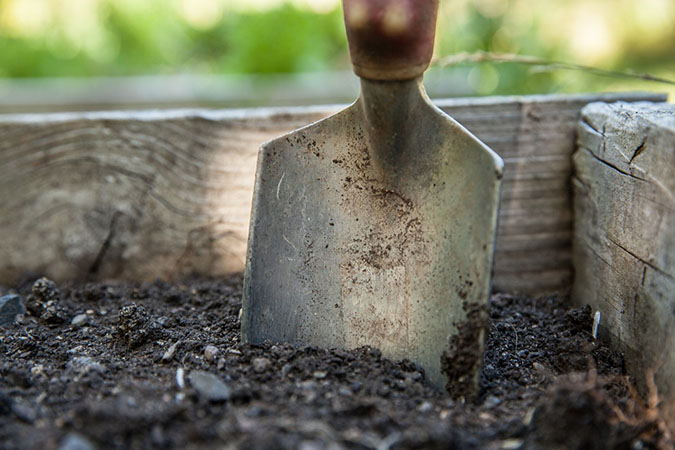
Image by walkersalmanac from Pixabay
While it may not be the most exciting of gardening topics, nothing is more important than having a basic understanding of fertilizer. Just like you and I need nourishment—so do plants. Understanding just a small bit of information about fertilizer can go a long way toward helping your garden grow big, strong, healthy plants on a light budget.
Before we look at some inexpensive homemade fertilizer options, let’s look briefly at the subject in general.
Natural Fertilizer Versus Synthetic Fertilizer
All fertilizers fall into one of two basic categories: chemical/synthetic or natural/organic. Chemical/synthetic fertilizers are manufactured using synthetic substances that usually contain highly concentrated forms of nitrogen, phosphorus, and potassium (these are the N-P-K values listed on the fertilizer packaging).
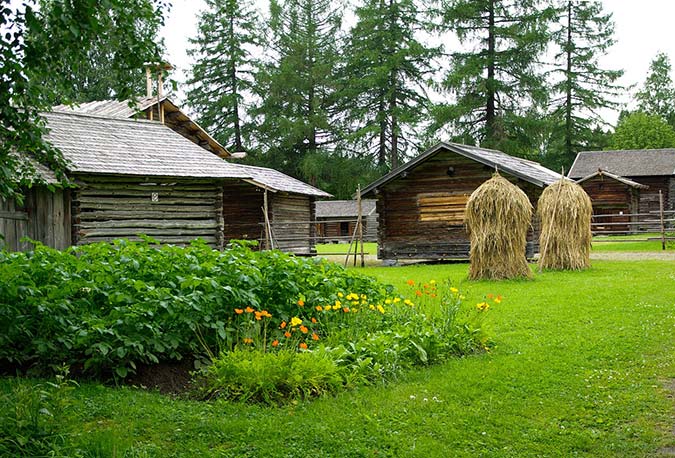
Image by jacqueline macou from Pixabay
These fertilizers work quickly because they feed the plants directly. But they do come with a downside—they do not improve the soil itself, and they can, over time, even destroy the beneficial organisms needed for healthy soil. When you use large quantities of this inorganic stuff over and over again, its byproducts will actually build up in the soil and can eventually hinder plant growth.
Organic/natural fertilizer often uses alfalfa meal, cottonseed meal, or fish emulsion to provide nitrogen; bone meal or rock phosphate to provide phosphorus; and kelp meal or granite meal to provide potassium.
You May Also Enjoy This Series: The Organic Growers’ Tool Kit
The downside here is that they work much more slowly, first breaking down in the soil into forms that the plant roots can more easily absorb, then making their way up the plant roots to your hungry plants.
Organic/natural fertilizer, then, doesn’t feed the plants directly but rather adds essential nutrients to the soil, where they become available to the plants, more slowly, over time.
Understanding the Basics of N-P-K
While there are many important nutrients in good fertilizer, it is understanding the “Big 3” (a.k.a. N-P-K) that is key to making your own effective fertilizer at home. The N stands for nitrogen, the P for phosphorus, and the K for potassium. Each has an important role to play in the health of your garden.
Nitrogen is the nutrient plants use most to grow large and lush, with tall stems flowing with lots of good, leafy growth. If you examine the N-P-K content of commercial products that advertise “miracle growth,” you will find there is no real miracle at all. The amazing growth is simply due to a balanced, but high, N-P-K ratio with a hefty amount of nitrogen in the mix.
You May Also Enjoy:
“Organic Nitrogen Fertilizer: 6 Secrets to Soil Health”
“Special Challenges to Managing N-P-K in the Organic Garden”
Phosphorus is needed to grow strong, healthy root systems and to promote vigorous flowering. Commercial “blooming” mixes are usually high in phosphorus.
Potassium helps with plant growth, protein production, plant hardiness, disease resistance, insect resistance, and efficient water use. Plants without enough potassium grow slowly and can have yellow leaves.
Natural Fertilizer or Not—Less Is More
Always remember the one basic rule that applies to the use of all fertilizers—”Less is more.” If you use too much fertilizer or too strong a concentration, you could do much more harm than good. Plant roots can be harmed, and you will soon see the tell-tale symptoms of fertilizer burn—brown, curled leaf edges and leaves that wither and fall from the stem. Always err on the side of caution. Less is more!
You May Find This Helpful: “How to Measure Your Favorite Organic Fertilizers”
Now, with a simple understanding of the information above, you are ready to get out and make your own natural fertilizer. For my purposes, I needed a good, effective, general-use fertilizer. Here are a few of the solutions that have brought me success:
15 Go-To Sources for Homemade Fertilizer
Making your own organic natural fertilizer is easy and fun. There are quite a few common items found in your kitchen and elsewhere around the house that can be used as homemade plant food!
Aquarium Water
Water your plants with the aquarium water taken right out of the tank when cleaning it. The fish waste makes a great plant fertilizer. Fresh water only please; do not use water from a saltwater tank.
Bananas
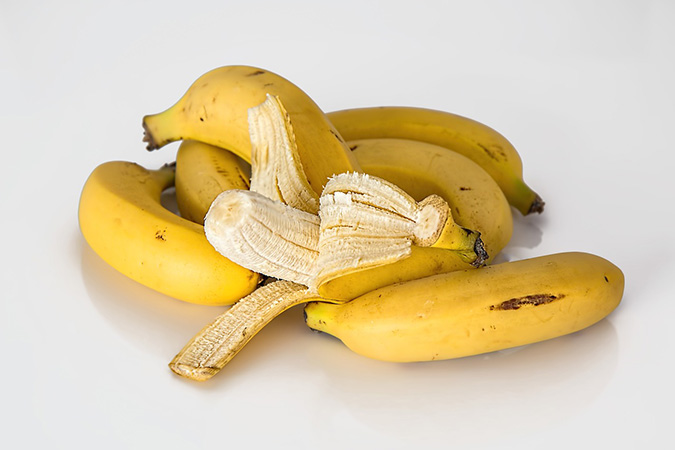
Image by Steve Buissinne from Pixabay
Bananas are not only tasty and healthy for humans, but they also benefit many different plants. When planting roses, bury a banana (or just the peel) in the hole alongside the rose. As the rose grows, bury bananas or banana peels into the top layer of the soil. Both of these approaches will provide the much-needed potassium that plants need for proper growth.
Blackstrap Molasses
Blackstrap molasses is an excellent source of many different nutrients that plants use. These include carbon, iron, sulfur, potash, calcium, manganese, potassium, copper, and magnesium. What makes this an excellent natural fertilizer is that it feeds beneficial bacteria, which keep the soil and plants healthy.
To use blackstrap molasses as a fertilizer, mix it with another all-purpose fertilizer. A good combination to use is 1 cup each of Epsom salts and alfalfa meal. Dissolve this combination in 4 gallons of water, and top it off with 1 tablespoon of blackstrap molasses.
Or simply mix blackstrap molasses in with compost tea. Do this only after the compost tea has steeped.
Coffee Grounds
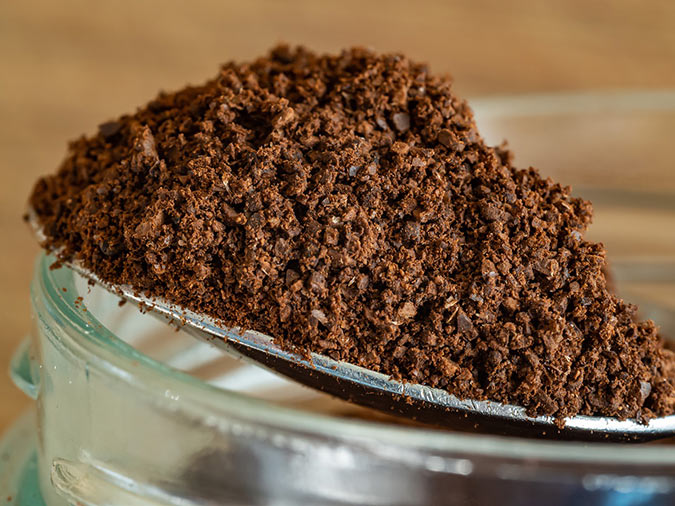
Image by Martin Hetto from Pixabay
Used coffee grounds contain about 2% nitrogen, about a third of a percent of phosphoric acid, and varying amounts of potash (generally less than 1%). Coffee grounds are particularly useful on those plants that like things a bit more acidic, such as blueberries, evergreens, azaleas, roses, camellias, avocados, and many fruit trees.
You May Also Enjoy:
“19 Uses for Spent Coffee Grounds in Your Home and Garden”
“Cold Brew Coffee: Brew the Best-Tasting Coffee Without Fuel”
I recommend that you allow the coffee grounds to dry, then scatter them lightly, as a mulch, around your plants. Avoid scattering them thickly when they are wet because clumps of coffee grounds have a tendency to get moldy.
Cooking Water
Many different nutrients are released into the water that food is cooked in. Water that is used to boil potatoes, vegetables, eggs, and even pasta can be used as a natural fertilizer. Just remember to let the water cool before applying it to your soil.
Corn Gluten Meal
Corn gluten meal is a byproduct of the wet-milling process for corn. It is used not only as an organic pre-emergent herbicide but also as a fertilizer that is 10% nitrogen. To use as a homemade fertilizer, simply spread a thin layer of corn gluten meal and scratch it into the top inch of soil.
Plant veggie starts inside the treated area for optimum nitrogen benefit, and do not worry about accidentally harming your plants. Corn gluten meal only works as an herbicide before seeds germinate—not after—so it won’t hurt plants that have already sprouted.
Egg Shells
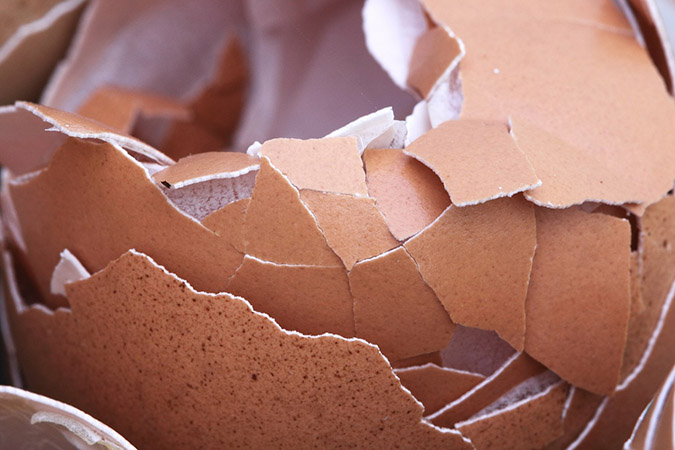
Image by PublicDomainPictures from Pixabay
Egg shells contain about 1% nitrogen, about a half-percent phosphoric acid, and other trace elements that make them a practical natural fertilizer. Calcium is an essential plant nutrient that plays a fundamental part in cell manufacture and growth. Most roots must have some calcium at the growing tips to grow effectively.
Plant growth removes large quantities of calcium from the soil, and calcium must be replenished, so this is an ideal way to “recycle” your egg shells. Simply crush them, powder them in an old coffee grinder, and sprinkle them around your garden soil.
Epsom Salts
Combine 1 tbsp. of Epsom salts with 1 gallon of water, and put into a sprayer. Apply once a month, directly to the foliage, for a quick dose of magnesium and sulfur.
Wood Ash (From Your Fireplace or Fire Pit)
Ashes can be sprinkled onto your soil to supply potassium and calcium carbonate. Hardwood is best—and no charcoal or lighter fluid, please, as this can harm your plants.
Don’t use ash in areas where you are trying to maintain acid-loving plants, however. The ashes are alkaline and can increase alkalinity in the soil.
You May Also Enjoy:
“Aerobic Compost Tea, Worm Tea, and Leachate—A Clarification”
“Make Peace With Your Poop (and Then Make Compost With It!)”
“5 Inexpensive, Simple Solutions For Small-Space Composting”
Gelatin
Gelatin can be a great nitrogen source. Dissolve 1 package of gelatin in 1 cup of hot water, and then add 3 cups of cold water. Pour directly on the soil around your plants once a month. This is great for houseplants!
Green Tea
A weak solution of green tea can be used as a natural fertilizer to water plants every 4 weeks. Use 1 teabag to 2 gallons of water.
Hair
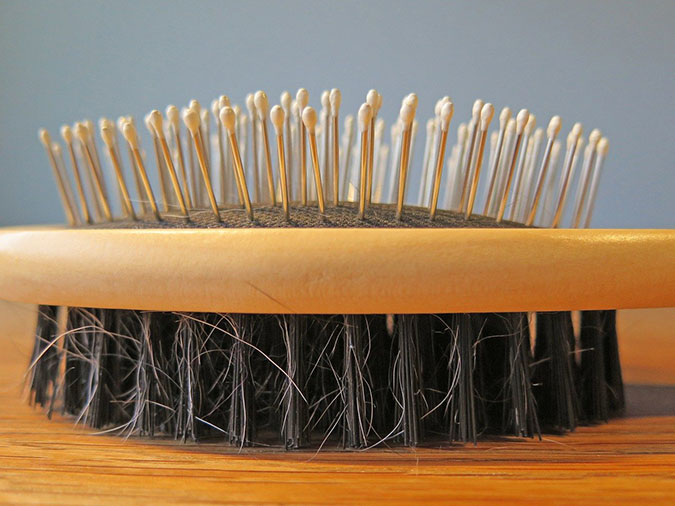
Image by Ludwig Willimann from Pixabay
Hair is a good source of nitrogen, and it does double duty as a deer repellent. A good source for this hair is not only your hairbrush but also the local barbershop or beauty salon. Many of these establishments will save hair for your garden if you ask them for it. But do not limit yourself to only human hair. Dog hair, horse hair, and cat hair work just as well.
Horse Feed
What makes horse feed irresistible to horses is also what makes it an excellent homemade fertilizer. The magic ingredient is molasses.
To use horse feed as a fertilizer is simple and easy. It can be used as a soil amendment just by sprinkling it on top of the soil. Alternatively, it can be dissolved in water alone or combined with another organic fertilizer and applied as a soil drench.
Matches
The old-fashioned, easy-strike matches are a great source of magnesium. To use this as a homemade plant food, simply place the whole match in the hole with the plant, or soak the matches in water. The magnesium will dissolve into the water and make application easier.
Powdered Milk
Powdered milk is good both for human consumption and plants. This source of calcium needs to be mixed in to the soil prior to planting. Since the milk is in powder form, it is ready for use by your plants.
You May Also Enjoy:
“Fertilize Container Gardens: 4 Steps to Success”
4 Easy Recipes for Natural Fertilizer
These are some slightly more complex recipes for homemade plant food that I like to use. My favorites are the Simple Tea and the Quick Fix, but each of these makes regular appearances in our garden fertilizing schedule:
Recipe #1—Simple Tea Fertilizer
This simple recipe has been used for thousands of years. Give it a try in your garden for a quick and inexpensive dose of nutrients for your plants.
Instructions
• In a 5-gallon bucket, mix 1/4 cup of Epsom salts, 2 cups of urine (yes, good old pee pee), and 2 cups of wood ash (again, no lighter fluid or charcoal, please).
• Fill the rest of the bucket about half way with grass clippings, pruned green leaves, or even green weeds pulled right out of the ground.
• Fill the bucket to the top with water and allow the mix to steep for 3 days.
• After steeping, strain the tea or decant into empty milk jugs or old 2-liter bottles.
• Before use, dilute by 50% by mixing half water and half tea into your favorite watering can.
• Apply this wonderful mix by pouring it directly onto the soil around your plants.
If your results are anything like mine, you will see a noticeable difference in just a few days.
Note: Only steep for 3 days. By the third day, most of the soluble nutrients will have seeped out into the water solution. Stopping now prevents fermentation, which you want to avoid. Fermented materials will smell bad, and their pH can change rapidly, so it’s important to stick with a 3-day steeping, and then use the concentrate within a day or 2.
Recipe #2—Homemade Fish Emulsion Fertilizer
Fish emulsion is a natural fertilizer made using fish waste—such as fish parts and guts—and water. This organic, all-purpose fertilizer has also been around for thousands of years and it works great, but it takes weeks to make, and the mixture must have time to rot before you can use it. Yes, there is some bad smell here … it is made from rotting fish, after all!
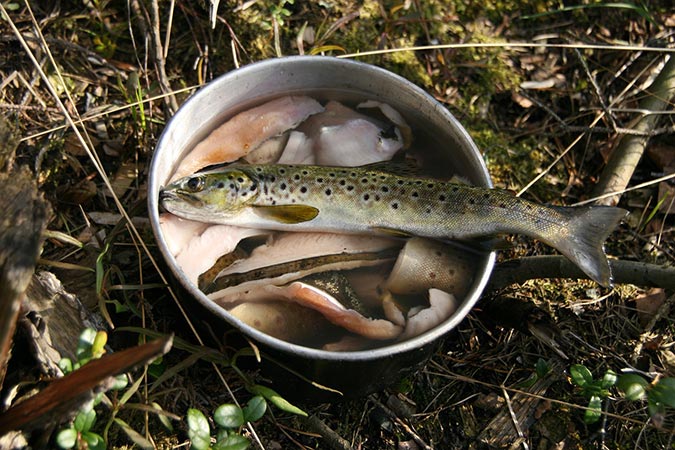
Image by Stian Tjelle from Pixabay
Instructions
• To begin the process, fill a 55-gallon drum about one-third full with a ratio of 2 parts water and 1 part fish waste.
• Allow this mixture to steep for 24 hours.
• After steeping, add more water to the drum until it is completely full.
• Cover loosely, and let the drum ferment for several weeks. We usually allow about 3 weeks for fermentation.
• To use, apply the fish emulsion fertilizer to the soil around your plants at a rate of 3 gallons of liquid for every 100 square feet of yard or garden.
Check out this recipe: How to Make Fish Emulsion Fertilizer
Recipe #3—Seaweed Fertilizer
Another fertilizer with a thousand-year pedigree. Not only is seaweed an all-purpose organic fertilizer but it also contains mannitol. Mannitol is a compound that increases a plant’s ability to absorb nutrients in the soil. Either fresh or dried seaweed can be used to create the all-purpose fertilizer. However, whether you use fresh seaweed or the dry, salted version, ensure it is thoroughly washed before using.
Instructions
• Add 8 cups of chopped seaweed to a 5-gallon bucket, and fill halfway with water. (Rainwater is always best if it’s available.)
• Loosely cover the container, and let the seaweed steep for about 3 weeks.
• After steeping, strain the seaweed and transfer the liquid to a container to store it for up to 3 weeks.
• To use, mix half water and half seaweed tea into your favorite watering can and apply it to the soil around your plants. Your plants will thank you for it within just a few days.
Recipe #4—The Quick Fix Fertilizer
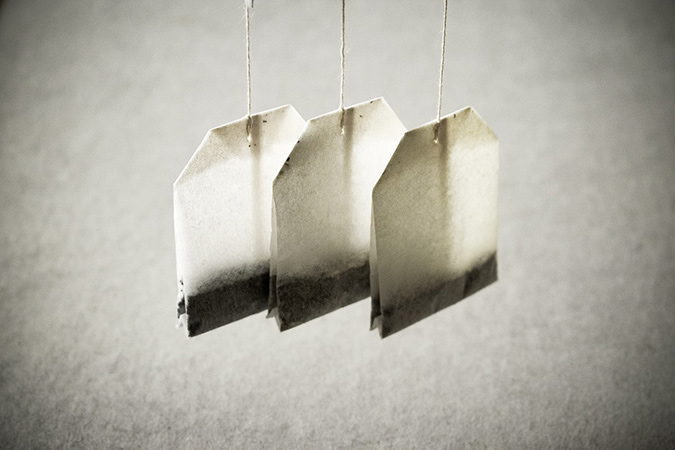
Image by PactoVisual from Pixabay
If you haven’t got time to wait 3 days to make the Simple Tea, you might want to try this idea. Most of the ingredients can be found around your home.
Instructions
• In an empty 1-gallon milk jug, mix together the following:
1 tsp. baking powder, 1 tsp. ammonia (a very strong source of quick nitrogen)
3 tsp. of instant iced tea (the tannic acid in this helps the plants to more quickly and easily absorb nutrients)
3 tsp. blackstrap molasses (this helps feed soil bacteria)
3 tsp. of 3% hydrogen peroxide (hydrogen peroxide is a powerful oxidizer because it combines with the air and water as it decomposes, freeing the oxygen elements and thus providing a supplement of oxygen to the plants and aerating the soil)
1/4 cup crushed bone scraps (this adds phosphorus—any bones will do, but I like to use fish bones myself as they also provide potassium)
1 crushed eggshell or 1/2 a dried banana peel for potassium (you can omit if using fish bones, but I would still add the eggshell for the calcium—especially for tomatoes, as it helps prevent blossom-end rot)
• Fill the jug the rest of the way with water (again, rainwater is best). Replace the cap and allow the jug to sit in the sun for about 1 hour to warm, then water your plants with this mixture at full strength.
Make Natural Fertilizer by Using What Your Animals Give You
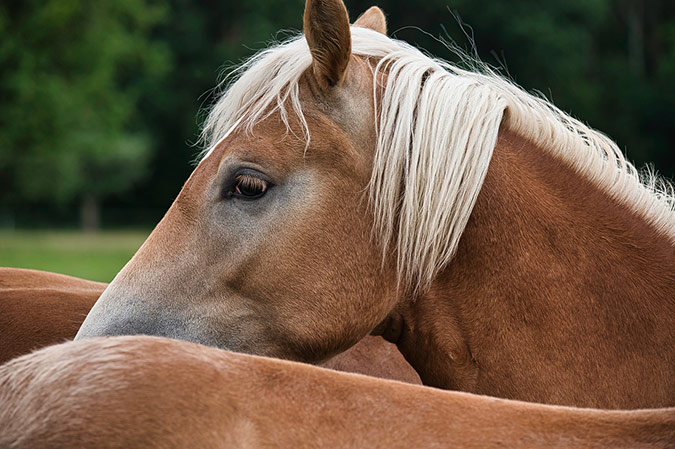
Image by Paul Henri Degrande from Pixabay
Making your own homemade fertilizer doesn’t get much easier than using manure from your animals. For eons, man used “free” fertilizer from manure to nourish his crops. Manure can be used as is after drying or in the form of manure tea.
Before manure is used in the garden, it should be aged and dried and/or composted first. Age fresh manure for at least 6 months. Well-aged manure on its own makes a great fertilizer for garden plants.
You May Also Enjoy:
“Gardening Failure: 5 Ways to Troubleshoot & Regroup”
“A Simple Fertilizer From the Greek Gods”
“Jump-Start Your Compost With These 5 Free, DIY Compost Activators”
You can spread aged manure directly on top of your garden soil at a thickness of 1/4 to 1/2 inch. Another option is to till it (or mix it by hand) into the top layer of soil in the fall or winter, prior to spring planting.
Composting manure is one of the best and safest ways to use this free fertilizer since it eliminates the possibility of burning your plants and controls potentially harmful bacteria.
Timing Is Everything
As mentioned, fall is the best time to use manure in the garden. This allows plenty of time for the manure to break down, eliminating the threat of burning plants in the garden come springtime.
As the soil absorbs manure, nutrients are released. This enriches the soil, which in turn helps the plants. One of the most important benefits of using manure in the garden is its ability to condition the soil.
Be Sure of Your Manure
Nearly any kind of manure can be used as a natural fertilizer. Generally, horse, cow, and chicken manures are the most commonly used. Some people also use sheep, rabbit, turkey, and more.
It is not recommended that you use manure from your cats, dogs, other household pets—or any other meat-eating animals. These manures are unsuitable for the garden or the compost pile as they are likely to carry parasites.
Making Manure Tea Fertilizer
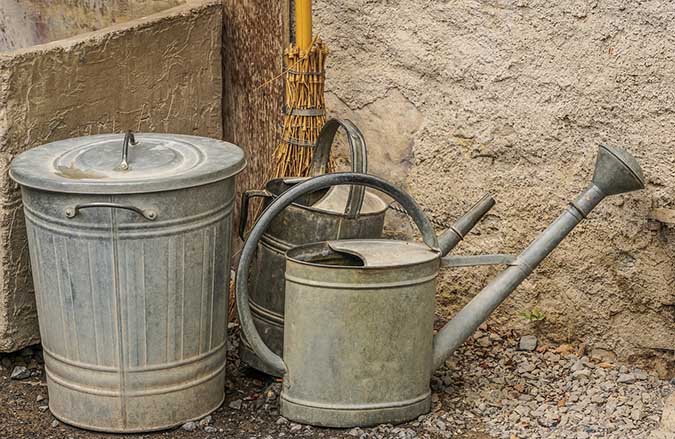
Image by Susanne Jutzeler, suju-foto from Pixabay
I will leave you with one last recipe for homemade fertilizer. I use this tea regularly, and it works great—just make sure that your manure is well aged and comes from animals that have not been grazing on fields treated with broad-leaf herbicides, such as Grazon.
You May Also Enjoy:
“How to Rescue a Garden Destroyed by Grazon Contamination”
12 Ways to Make a Zucchini Surplus Disappear—With Recipes
High-Performance Garden Show, Week 11: Trellis Your Tomatoes Like a Pro
Bonus Recipe: Manure Tea Fertilizer
Manure tea enriches the soil and adds much-needed nutrients for healthy plant growth. The nutrients found in manure tea make it an ideal natural fertilizer for garden plants. These nutrients dissolve easily in water so that they can then be added to a sprayer or simply used in a watering can. The leftover manure can be thrown in the garden or reused in the compost pile.
Manure tea can be used each time you water plants or just periodically. It can also be used to water lawns.
It is important, however, to dilute the tea prior to use so as to avoid burning the roots or foliage of plants. I fill my watering can halfway with the tea and then fill it to the top with rainwater. I use this every 3 weeks or so during the growing season.
Instructions
• Place a shovelful of well-aged manure in a large burlap sack or pillowcase.
• Make certain that the manure has been sufficiently aged or “cured” beforehand. Fresh manure is much too strong for plants, and it can contain harmful bacteria.
• Suspend the manure-filled “tea bag” in a 5-gallon bucket, and add water to create a mix of 5 parts water to 1 part manure.
• Allow this mixture to steep for up to 2 weeks.
• After steeping, remove the bag, allowing it to hang above the container until the dripping has stopped.
• Skipping the tea bag and adding the manure directly to the water usually speeds up the brewing process. Without a bag, the tea is usually ready within only a few days if you stir it thoroughly during this period. Once it has fully brewed, you will have to strain it to separate the solids from the liquid. The remaining manure can then be added to the compost pile.
• To use, dilute the tea by half, as mentioned above, prior to use.
You May Find This Helpful: “How Much Nutrient Is in Your Homemade Fertilizer?”
What Do You Think?
Lately, before I toss anything into my trash, I stop and ask myself, “How else can I use this?” As often as not, the things I would have otherwise thrown away can help out in my garden. That said, this list of homemade fertilizers is by no means exhaustive. If I’ve missed any of your favorites, be sure to let me know in the comments below!
Finally, keep in mind that the most important thing you really need to understand about making your own natural fertilizer is that you control what goes into it, so you know exactly what goes into your garden and therefore what goes into your body. Making your own homemade plant food is also a great way to “reduce, reuse, and recycle.”
____________________
This is an updated version of an article that was originally published on September 1, 2015. The author may not currently be available to respond to comments; however, we encourage our Community members to chime in to share their experiences and answer questions!
The Grow Network is a participant in the Amazon Services LLC Associates Program, an affiliate program designed to provide a means for our team to earn fees for recommending our favorite products! We may earn a small commission, at no additional cost to you, should you purchase an item after clicking one of our links. Thanks for supporting TGN!

The Grow Network is a global network of people who produce their own food and medicine. We’re the coolest bunch of backyard researchers on Earth! We’re constantly sharing, discovering, and working together to test new paths for sustainable living—while reconnecting with the “old ways” that are slipping away in our modern world. We value soil, water, sunlight, simplicity, sustainability, usefulness, and freedom. We strive to produce, prepare, and preserve our own food and medicine, and we hope you do, too!
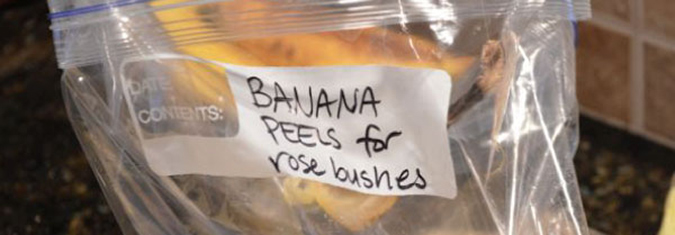
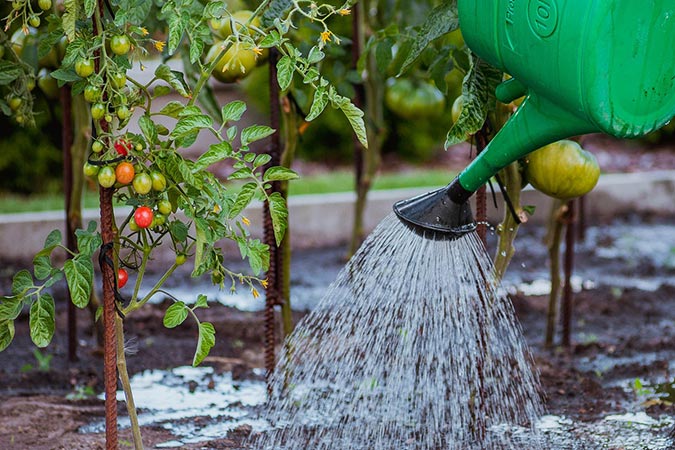







COMMENTS(123)
Excellent information. Easy to ready. Easy to understand. Max vote!
This is one of the best articles yet… It is easier than Steve Solomons complete organic fertilizer which mixes the seed meals used in feed and lime.
Great article, but I did find it lacking one key fertilizer that I use all the time. Worm compost tea – takes care of the kitchen scraps, yard debris, etc… whether you use a worm composter or a compost pile with worms – worm tea is wonderful and can fulfill your plant needs easily.
Hi Alan – We’re working on another article dedicated to aerobic compost tea made with worm castings. Should be up here before too long…
For the quick fix, can you substitute used tea bags for the instant iced tea?
Yes, you can use tea bags instead of the instant iced tea, I like the instant tea myself because it dissolves quickly and mixes thoroughly.
If using used tea bags I would brew a pot of water with about 6 used bags and then add the water to the mix rather than putting the bags directly into the mix – just to avoid the chance of mold from the old tea bags growing in the mix.
Among manures seldom used is Humanure. Jenkins’ book of that title, 3rd edition, is online free, leaving little excuse to dither. Good you mentioned urine, the other wasted household item. Our deprived soils would long since be replenished if old tired inhibitions hadn’t prevented use of “waste.”
And think how much cleaner your drinking water would be!
Hi! This is a great article!! So informative, and some things I really never heard of doing before! I’ll be glad to try them out. I’m also sharing this with our local organic gardening group.
Just to let you know, on that scale, I accidentally clicked on the star at the opposite end from what I meant, which means I accidentally clicked “awful.” Sorry! I did not see a way to correct that, but I clicked again on “excellent.” 🙂 So, if you see an “awful” – please disregard!!!
Please get the printer friendly button for your blog here, Drives me crazy you don’t have one .. https://www.printfriendly.com/
Hi Diana – We have printfriendly – you should see it at the bottom of each post, in with the other sharing buttons. Thanks – Michael
There is only Facebook, Google Plus and Twitter. No print that I see…
Hi Shae – Yeah, we lost that option when we upgraded to our new template. We are looking for a way to work it in to the new template – stay tuned…
I really enjoyed this very comprehensive article. It answered a lot of my questions, particularly about manure tea. I have a large, front porch container garden that is needing some extra nourishment.
Thank you for this very useful article. Can we use the droppings of my pet cockatiels as manure? They don’t eat meat. If yes then how can I age it?
Thanks again
Victory
Very well done and informative article. Thank you! So many people wanting to use human waste is a concern. Too many potential health hazards. Your article is very good and you did a great job of presenting a lot of information.
A great what is to us left over veggies and fruit sew weed and sea food dehydrate, and Incas epson salt or coffee not all same day
Wow!! outstanding job, Joe!!
Very useful investigation for my garden!!
Thank you so much. 🙂
David.
I grew up on a farm and we had HUGE gardens, like 4 different with hundreds of hills of watermelon and cantaloupe. Our soil was sandy which made good melons we sold. Each fall after steers were all raised and sent to butcher we cleaned the lot and horse sheds and that was taken to garden and covered with any old or broken down hay covering it for winter. In early spring my dad would till it and work the soil in March for about a month everytime he was able. Then we had to rake out any hay and put it in strawberry and rasberry patches. We saved eggs, dead minnows, dead chickens and fish remains and dug deep by fruit trees deposited there. My mom would take horse poop and make a tea and pour on her roses and mums. They were always HUGE and full of blooms. My dad always said not to fertilize tomato plants too much b/c you would have lucious dark green plants with few blooms. He also culled alot of blooms /new fruits off the plants to prevent numerous small ones. My dad lived in family of 12. They had 6 gardens and my gpa was known all around for his garden crops. They truly had to self-sustain. I used to complain about all this work but I know now it is a gift that I can now pass to my children as well as rhow to raise our own meat and chickens., how to hunt and fish as well.
Thank you Lori, for this small explanation of your childhood and tell us how things were done so well. Some people like me still doing it, but not many wants to get dirty or do the hardwork, no wonder why our children and population is getting sick.
John de Sa
Excellent article. I have a feeling I have read it before, but always look at it with new eyes, having learned so much in the subsequent year. Loved Lori’s description. Stories from a family teaming up to use the riches from their farm helped me see us using what we already generate, and ways in which we might increase our investment portfolio! I, too want to print every page, laminate them and refer to it like a manure-proofed handbook!
David
You didn’t mention birds except chickens. We have a friend who raises pigeons. Would cleaning out his loft make a good fertilizer. Any cautions concerning its use? Would a manure tea be the best way?
Correct me if I’m wrong, but I think pigeon droppings contain a high amount of ammonia (or something similar) as you can get very ill from walking around old barns where pigeons have roosted for a long time. Presumably ammonia has an adverse affect on plants, I think. Stick with chicken drippings!
Yes. Ive been using some quail shit with great results, my red Russian kale is HUGE!
Pigeon towers were widely used in Europe and the Middle East during the Medieval period. The towers, which could hold as many as 14000 pigeons, were located and constructed in such a way as to minimize/eliminate predator problems, supplied copious amounts of nitrogen rich manure, and served as voracious insect predators. https://www.atlasobscura.com/places/pigeon-towers-iran
what can i use to make my fertilizer last longer even fo parking
Hi, I am new to fertilizing and gardening in general. Have been skipping on fertilizing for fear of screwing up and killing the plants, which has happened to me in the past with ‘cooking water’… so my question really is where did i mess up? I cooked sweet potatoes waited for the water to cool and then watered my then very small garden. Which consisted mainly of succulents at the time. No lie, all except for one of the plants were orange the next morning and eventually died.
I was so dissapointed i quit gardening for a while but recently started a new garden with mostly edibles, peppers, a dwarf peach tree, celery, pomegranate tree, cantaloupe, watermelon, papaya and a few non edibles like hibiscus, elephant bush (which I recently heard is actually edible ?) and other succulents.
Please if anyone know where i screwed up i would really like to know as i am always dissapointed at all the kitchen waste I put out. Recently started vermicomposting but is such a slow process ?.
Any help will be greatly appreciated. Thanks in advance.
Ruby
My grandpa used to bury fish guts in a nylon in the ground near his tomato plants. He won prizes for his tomatoes.
I’ve heard about using corn gluten meal as a pre-emergent herbicide, and am interested in trying it in the spring. Any ideas on how I might non-gmo corn gluten meal?
Hi Teri – If there’s an organic nursery in your region, give them a call – some organic nurseries carry it seasonally in the spring and fall. The timing is key – you have to watch your weeds & strike with the corn gluten just before the weeds emerge. If you wait too long, you can accidentally fertilize the weeds instead of preventing them.
Thank you. A question we have a hay field down an it’s been rained on, now it is unsellable. Would you know what nutrients I could make of it.
Hello Teri, I grow comfrey and use the leaves for many things one is to make comfrey tea about 6 leaves to a 5 gal. Pail and wait for leaves to rot then use on plants, my question is do you know if I need to add additional water to mixture before Appling to plants. Sometime I spray and sometimes add directly to soil. Thanks, larry
Have just got answers to a thousand questions that keep disturbing me.unfortunate i cant save them now.
Hello,
one of the good solutions is so called “organko” here in Slovenia, a bokashi system to produce your own organic fertilizer from your kitchen waste. Doesn’t smell 🙂 http://bokashi-organico.com/
If you want to decompose faster use http://www.yourhealthconnects.com/shop/full-harvest-microbial-inoculant/.
Very insightful post. I love that you detail nutritional content of some of the material proposed as I am interested in the composition of them for more precise homemade fertilizers to use on a per mac ultra farm. I was wondering if you knew, or posted on the matter already or maybe a future post on the use of specific plants used as tea or green manure ? I was thinking of plants like comfrey, nettle, horsetail and all of the likes? Thanks to share such useful info, keep up the good work.
Seb
A question about hair from hair salons and pet groomers. .. are the chemical used by them an issue of any sorts? I have read that it was safe in compost as bacteria would digest the chemicals… any truth there or more insight ?
When I clicked on this article I figured it would be about using urine. Too squeamish? Urine does not present the disease risks of humanure. Dilute it 40:1 for plant starts (after the 1st true leaf), and 80:1 for outdoor irrigation.
If this is the reply on using urine (you can’t tell which reply goes to which post), its all over the internet. It’s common practice in Europe, I don’t worry about medications (I clear it through dowsing) and never had a problem with it at all, we mix it with ash and horse manure and it works well. Also specifically male urine has testosterone in it which is a marker to wild animals that you may not want on your crops, such as skunks, porcupines, deer, etc. Research it out, I heard it was 10water to 1 part urine. So just eye it, and don’t worry about it. Nature has a way of filtering things out. Paul Gautschi talks about the filter that wood chips cause when Katrina hit and the forests nearby were fine. The wood chips soaked up all the salt from the ocean and the forests were untouched – they are an incredible filter. I think if you look for problems you fnd them. Also permaculture will teach how to use animal poop, it has to compost for around 2 years, we layer dog poop with straw in a separate bin, once it’s black much it’s black mulch. It just takes longer is all. It shouldn’t have any smell to it. Guys that clean out septic tanks can tell you that – people who are vegans or vegetarians you can tell bc their septic tanks are black loam. Paul Gautschi mentioned that also. My dogs are vegetarians, so I don’t worry about it, neither do they have parasites. People worry way too much, if you’re worried, just use it on your rhododendrons, roses, trees, etc – its natural fertilizer once its broke down. That’s the whole oldtime story of “outhouse Hollyhocks”. Those flowers come back every year due to the human manure in outhouses in people’s lake cabins. funny
agreed 100%, I use it all, putting everything back into the land, including urine for urine therapy.
I was wondering if you intended you use ‘baking soda’ vs ” baking powder”?
Great information that is needed by all. Thank you for sharing
Thanks for greet information .
GOD BLESS YOU FOR SHARING THIS INFORMATION
Totally <3 it's awesome
Wish more people realised they can use their own gardens to produce food, and wish everyone respected and supported that as well.
Good and resourceful article
Awesome article, thank you!
I was planning to regrow the leftovers from some veggies as lettuce, ginger, onions etc at home and needed some clues on what natural ingredients to use! Now I can happily regrow inside my kitchen 🙂
Thanks so much!
Amy
https://livingextremekawaii.blogspot.com
None of these specifically mention Potassium (K), which it seems my soil almost totally without. It is very high in Phoshorous (too high, the Ag people said) and I can easily add nitrogen. But how do I add potassium. And it is true, my plants grow slowly. BTW, my soil is alkaline also (7.4.)
Any advise?
Granite dust is one easy way to add potassium. Also hardwood ash and banana peels.
Great article. Almost anything organic makes good compost. Paper from the shredder. And besides green tea mentioned here, all teas (after you drink it, tealeaves left in teapot with new water added over night) are beneficial. In particular, I’ve noticed that jasmine tea is great for making houseplants flower. You will be amazed.
Excellent article! Now I need to figure out how to save it.
Google “JEEVAMRUT” and prepare. It is extremely simple but very very effective. We extensively use in India and get excellent results.
I think jeevamrit with worm compost tea may do wonders in your garden.you can further use banana peels egg Sheal Epsom salt fish seaweed emulsion with 2-3 inch layer of compost and wood chips as a thick layer of mulch.
Thank you! This is a helpful, creative and fun article !
Wanted to share this permaculture wisdom about how to detoxify wastes that could eventually become beneficial in our gardens and to us; from http://www.zeri.org/ZERI/Five_Design_Principles.html–basically, it has to pass through at least 2 other kingdoms (Animalia, Plantae, Fungi, Protista, Archaea/Archaeabacteria, and Bacteria/Eubacteria) to become neutral or beneficial to the originating entity. It’s more intuitive than I’m making it, read the link for better context.
I have native black soldier flies (Hermetia illucens) to do compost in the warm climate where I live. Their waste is an extremely potent fertilizer so dilute 1:100.
I’ve just applied some cat manure that the larva, aka BSFL (and symbiotic bacteria) devoured a few years ago to the base of a ciuple maple trees in my yard. I am trusting that it will provide a slow release fertilizer. Waste not, want not >>> translation: when you don’t waste, you want for nothing.
It surprises me profoubdly thst you have no mention of urine, poop and especially dead animal bodies and rotten meat at all. Dead bodies are THE VERY BEST natural fertilisers one could ever look for.
Love the picture. I like that you have an image of Trunks grabbing his sword while you talk about dead bodies. The Freeza race must make an excellent green layer.
It surprises me profoundly that you have no mention of urine, poop and especially dead animal bodies and rotten meat at all. Dead bodies are by far THE VERY BEST natural fertilisers one could ever look for.
I am profoundly surprised that someone would take the time to criticize an article they apparently did not take the time to read. Had you read it you would have noticed that the homemade fertilizer recipes included things like urine, manure, and crushed bones (that would be your dead animals there).
love his informative article.Thank you
Thank you, Judy! So happy to hear you enjoyed it. 🙂
hi my name is anthoney and im student at gilroy high school and an ffa member and i have to do my sae project and i was wondering if you could tell me how to make fertilizer out of animal fecal matter
Anthony, take a look at the Manure Tea section of the article above. That might help you out.
HI, If i am using cook corn and high phosporous material will enchant fruit bud flowering?
and any idea for the formula
Good article Joe
Nice tip for roses with the banana peels. I’ll have to remember that one.
if i make some fertilizer at home and its in big quantity now i want to sell it,Who can buy my fertilizer?and how much i can earn from it..?
I actually differ from here because i am a busy person with gardening as my hobby. I cannot spend so much time on this stuff. Hence i use synthetic NPK – 20 20 20 once in 15 days. I was infact influenced by this video on youtube – https://www.youtube.com/watch?v=Y654mtxQKmY
And i am doing well, my plants are really growing healthy.
The director of the garden program for the community program in my town years ago was my neighbor. He got me into gardening. He would follow his Chihuahua around and make a gallon jug of manure tea from it. So dog pooey works for some people. I didn’t use it because I had small kids in my garden with me and they liked to pick stuff and just run it under the hose and eat it. But because they eat meat it is no good? I don’t have a dog but just wondering
Technically – more of a soil conditioner – biochar is something I would add to this list. If you burn wood – either hardwood or softwood, and the remaining charcoal is thoroughly burned (nearly pure carbon) – you can add this to soil to help improve drainage and enhance soil nutrient retention (particularly important for deficient soils). However, this needs to be activated with a nitrogen source, and perhaps other food for the beneficial microbes to colonize the charcoal. If it’s not properly colonized the carbon will take nutrients (N) away, so it’s a step that cannot be omitted. But, by using a lot of pee (maybe 1 gallon to 4 of biochar), and adding compost, and bat guano – you can have a mix ready in 1-2 weeks.
My problem is the curling new leaf of Bay Leaf Tree I am grooming; its got white tiny insects. Thanks for this srticle I have learnt a Lot!
I learned something new today. I definitely did not know that human hair can be used as a fertilizer!
I A Farmer In Cameroon I Want To Know More On How Grow My Crops Especially Cocoa
It answered my questions…thanks for the clear information.
Lime and pet waste Japanese circle. Simply aquire a plastic garbage can or wide pvc or plastic pipe. If a trash can cut out the bottom or drill many holes. Place in the center of a tight circle of desirable plants. Ideally 12-18 inches from the nutrient cylinder (I learned of the Japanese circle by researching tomatoe growing methods but I would love to try it on other acid loving plants). Fill the container gradually with pet waste and modest dusting of lime and water frequently. If you’re scooping poop regularly anyway you may as well put it to work. I’ve heard that dog droppings are unadviseable compost but my tomaoe plants have grown large and productive with this method. I adamantly did not add anything besides dog waste and lime to get a controlled variable on this method but I’m sure many other things can be used in the nutrients cylinder.
Excellent and powerful information. I am happy to visit your site. I am not disappointed at all.
Please keep it up.
Really no matter if someone doesn’t understand after that its up to other users that they will assist, so here
it occurs.
So this may be a dumb question, but I’ll ask anyway. When using coffee grounds (I have some acid loving plants), the article says to let them dry first. I am not currently drinking coffee but I have several pounds of ground beans in my cupboard. Can I simply sprinkle dry, unused coffee grounds in my garden? Or does the coffee need to be brewed first to release the good stuff? Thanks! Great article.
Great article. Keep feeding us!! Thanks a lot!!
VERY GOOD
Really great article that I would like to Pin on my garden /plant board on Pinterest but I did not see that as an option…maybe next time…you should look into into it…thanks.
Hi Alan..
Very good article..You covered everything what people want to know about organic manure.I am sure this will he helpful to people..Keep going..
Babu
Pressed for time and haven’t quite read all comments, but I do want to add that, while respecting that gardening/farming organically is very much a lifestyle choice, in the last few years there is quite a lot of medical evidence about technologies and agro-chemicals that can do great harm to people and the livestock and crops that feed them? Are there plans to write an article about where the current dividing lines are for filtering through our non-organic food stream for compost components that may still have toxic consequences after composting?
THANKS FOR THE GREAT INFORMATION AND AN EXCELLENT ARTICLE. ARE YOU FAMILAR WITH DOWSERS. I USED TO BE IN THERE CLUB WHEN I LIVED IN LAKE LURE NC. THEY COULD DOUSE DIFFERENT MATERIALS TO SEE IF THAT WAS WHAT MY GARDEN NEEDED.
It has been my understanding that you can apply rabbit manure right on your garden because it isn’t hot like chicken manure. Supposedly, rabbit manure doesn’t have to compost and is still safe to use. What are your thoughts?
Molasses is high in lead. I only use it on non-edibles in containers.
Here is a great recipe for composting dog poop. Trees and shrubs love it! Never use on edibles.
In a 5 gallon bucket with a tight lid, put a layer of leaves in the bottom. Then a layer of dog poop. Rotate these layers until the bucket is full, always ending with leaves on top. When the bucket is full put the lid on tight and leave it. I don’t remember how long it takes (2-5 months?) but when it is completely rotted there is no smell at all and the bucket is full of clean black loam. I have used this on trees that were sickly and depleted and watched them come all the way back to thriving with one treatment. Put a layer of this compost around the bases of trees and anything that is away from food.
5 Star all the way. Thanks for info
Not gooooood
My garden is near the ocean in Alaska. We cover all the garden beds with tons of seaweed taken right off the beach. We don’t rinse or wash the salt off, just put it directly on the garden bed. Possibly we have enough rain to wash the salt away, but there has never been any adverse effect. Same for making seaweed tea.
Great post and forum here everyone, i stick to my tried and true eggshell tea, coffee grinds, and orange peels for my compost . i do a little grow op every year, and this does great for me, cant wait to try all the other suggestions on here. everyone have a great day.
remember! we all share 1 sky 🙂
Oh, and solar require ZERO land for the actual panels versus actual nuclear plant including the normal 4000 acre each plants has.
http://9tygodni.pl/faq
Thank you for sharing your knowledge about fertilizers. This one article has certainly given me new perspective on what is needed to grow healthy plants. I also didn’t realize that creating your
own fertilizer was not that hard to put together
to keep the plants thriving. I’m really impressed
with all I have learned here. From you.
Thank you very much for sharing Joe.
Very informative,I am from South Africa and we stay in an area where the rainfall per year is 500mm.I plant I do some companionplantingtests.I have established an Pecannut Orchard around my farmhouse.The Pecannut trees are on dripirrigation because of watershortage but I found that by planting a Comfreyplant next to the stem of the Pecantree is good because if the comfreyplant wilts i know its time to open the taps,but I also know that the leaves of the Comfrey is good fertilizer .I can also see that the plant creates a new enviroment for insects and earthworms underneath its canopy and that the soil stays moist for longer.At some other trees i plant runnerbeans which trails into the tree with an ubundance of greenbeans and then I know there is Nitrogen coming from the beans roots
Thanks very helpful and easy to understand
Nice to know I can use all kinds of things from the house and the yard to make the exact fertilizers I need.
Very informative article, thank you!
I am constructing new hugelkulture beds and I was wondering how to
layer them? I have several components available. If I use ALL of these
will I have to add anything else. What order should I layer these?
2 year old half composted wood chips
rough compost from 12 year wood pile
finer compost from above
salt march hay
biochar
finished compost
leaf mold mostly rotted maple leaves
I really would appreciate any help as I plan to construct the beds asap. Thank you!
This is a great list. I’ll have to try some of these ideas. Thanks for putting this together.
Very informative. Thank you
Great article – will definitely be trying some of these! Our soil is quite poor and I’ve been looking for just this type of information to give it a boost. Thanks!
Great article. I’ll try some of the fertilizer teas. There is a lot of Comfrey growing up in my area (east coast of Canada). Bees love the flowers, and the leaves can be dug into the soil or made into a Comfrey fertilizer tea. I save egg shells, tea leaves and coffee to apply to the soil in addition to the Comfrey.
So much info. I can’t wait to try these methods!
I have found that crushed egg shells have an added benefit. When sprinkled around plants they can help to protect against slug damage as the slugs do not like to crawl over the broken shells.
I tried making comfrey tea, they were right when they said it would smell like cow manure. But I got started to late to try in the garden. Next year I’ll start earlier.
doing most of those but our horse will be very upset if we used her feed for compost without including her…lol…she is a great compost machine.
LOVE this article! I also use my extra whey on the garden and when making sprouts I understand the water has lots of vitamin b and it goes on the plants. We have a composter here in Hawaii, everything goes in there including onion and garlic paper. It’s funny the winter squash seeds and tomato seeds and papaya seeds make it through and come up in the garden. I had THE BEST crop of volunteer tomatoes this year.
Great article and I have tried a few of these. One not mentioned that I do each year is Leaf Mold. It’s so easy to do and with a bad back is also not hard. Thank you!
I use my eggshells to make soup stock before they end up in the compost heap.
Since I have an aquatic turtle, I use the water from his tank when I clean it to water my plants.
I also take water used to rinse out milk containers and water plants with it. I figure it’s got some oomph from the milk.
can any of these be used in a hydroponic grow ?
if not any suggestions would be appreciated ?
Excellent information about fertilizers, what they are composed of, how they interact with plants and soil. The recipes are practical and can’t wait to try them! Thanks!
I heard about using tea bags and coffee grinds, but this is the first time I heard about using Hydrogen-Peroxide in a water solution to give oxygen to the soil. Makes sense.
Yeast (or flat beer) with Cola soda (sugar) and ammonia recipe for accelerating the Composting process is explained in this article:
https://www.hunker.com/12433295/compost-accelerator-recipe
I’m looking to buy a compost bin. Does anyone have any recommendations? I live in New England. The weather is nearing freezing temperatures at night.
There is great information about how to do a compost pile that actually creates enough heat to stay warm and decompose the material. Check out TGN and experts from Grow System Summit.
Wasting food scraps creates issues with our environment. Here is a Homemade Compost bin video. https://youtu.be/RyYyy4nKzDg
The really simple really easy fertilizer works not in a garden. Whenever you have spoiled stew or beans or the leftover parts of vegetables you cut up, small pieces, you scatter them about the dirt parts of your yard. For the liquid, you dig a trench about a foot down, pour some in, knock some dirt back in, and continue. Especially around the drip line of your trees. Over the years, my rocky clay soil around the house developed soul and grew nice healthy greenery of various sorts for the animals.
“December 24, 2017 at 4:58 am – khill says: It has been my understanding that you can apply rabbit manure right on your garden because it isn’t hot like chicken manure. Supposedly, rabbit manure doesn’t have to compost and is still safe to use. What are your thoughts?”
Yes, that is what everyone says. Rabbit manure has a low enough concentration of nitrogen that it can safely be applied fresh to the garden.
“October 21, 2019 at 8:26 am – Meme Grant says: Doing most of those but our horse will be very upset if we used her feed for compost without including her…lol…she is a great compost machine.”
Hahah! LOL, indeed! : )
When I read the article, I too thought it was strange to suggest using horse feed as fertilizer. So much more logical, and likely cost-effective, to use what comes out the other end of the horse!
This is a great article. In-depth information, without becoming too academic. Useful how-to instructions for the reader to implement. Very well written overall.
I was particular glad to read, after having defined the macronutrients, the author following up with “The remaining micronutrients can be supplied in smaller amounts even by some of the poorest soils out there.”
Good that this author does not subscribe to the all-too-common philosophy of scarcity when it comes to garden soils. Read the works of Dr. Elaine Ingham for more info on this topic. But to put it quickly, there are no soils out there – not even the poorest and most degraded soils – that lack the necessary mineral elements to support plant life, no matter what a soil test might tell you. If a soil test proclaims that your soil is deficient in iron, let’s say, what that really reflects is the limited presence of certain water-soluble compounds containing iron, which the test can measure. But the iron is still there. Nonetheless, since the test can’t measure it, the conventional wisdom presumes that it doesn’t exist and thus concludes the need to add iron-rich amendments. Usually in the form of salts, which over time only makes things worse.
What is truly necessary to turn plain dirt into healthy soil are microorganisms and the organic matter to sustain them. They will unlock the mineral elements already present in the rock particles in the soil, binding them into water-soluble compounds that plant roots can then take up. As plants grow, and die, and regrow, the organic matter in the soil increases. Plants also pump sugar-rich exudates into the soil through their roots. All of this encourages more soil microorganisms, which then encourage more plant growth. And before long you have a thriving ecosystem springing from your supposedly-deficient soil.
your information is so helpful. thank you!